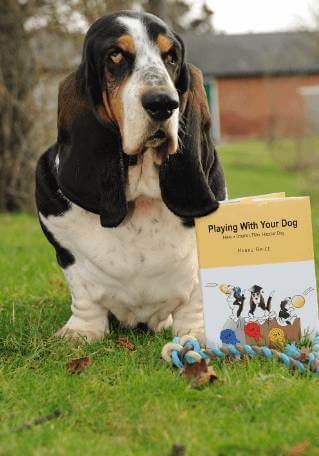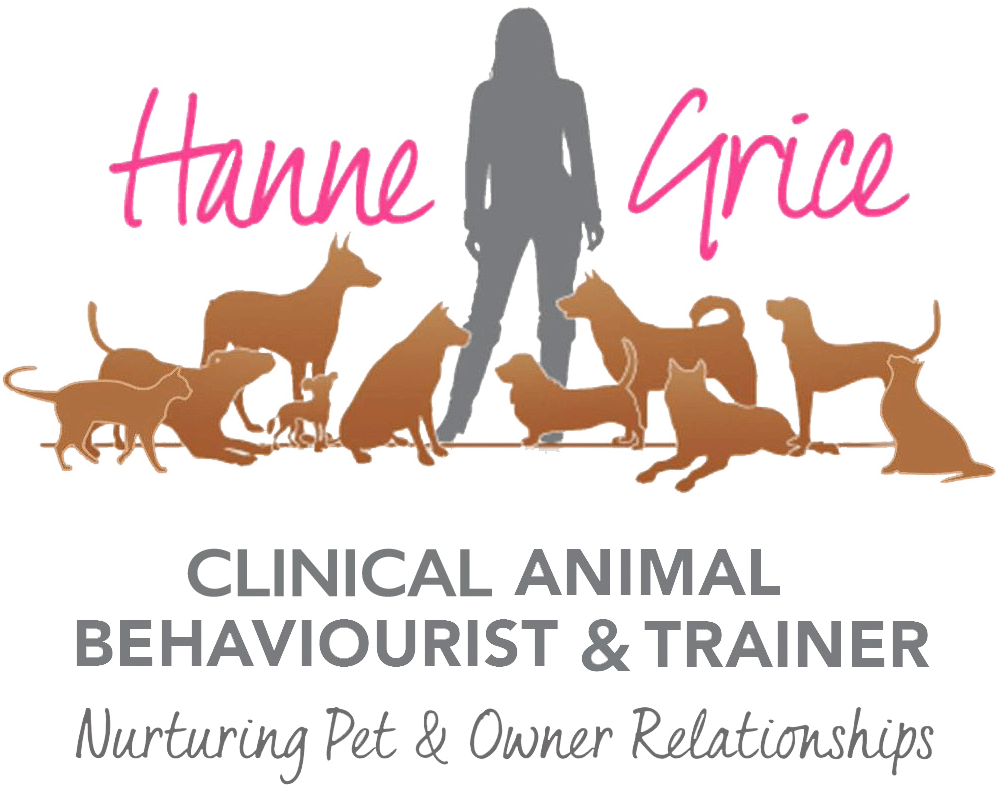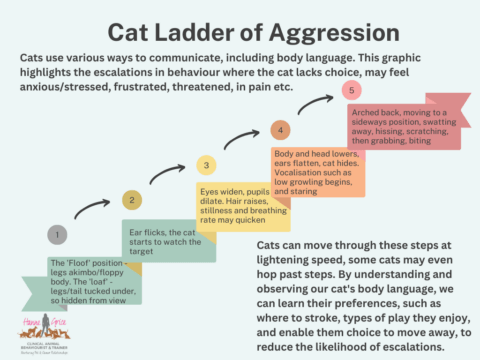Cats are fascinating animals, known for their enigmatic behaviour and ability to communicate through subtle body language signals. The Cat Ladder of Aggression is a framework used to describe the various steps or progression of a cat’s behaviour as they escalate toward aggressive responses, such as hissing, scratching and or biting. It is not necessarily a linear process, as some cats may hop over a few steps, and others may suppress their visual signals when feeling threatened. Nevertheless, by familiarising yourself with these common feline body language cues, cat owners can develop a deeper understanding of their four-legged friends and mitigate potentially harmful situations.
The Silent Warning Signs
Cats possess a vast repertoire of non-verbal communication cues that precede aggressive behaviour. Understanding these early indicators allows owners to intervene before a situation escalates. Some key non-verbal signals include:
- Dilated Pupils: When a cat’s pupils enlarge beyond their normal size, it can indicate high arousal, such as excitement, fear, rage etc, depending on the context. Dilated pupils enable the cat to see the target with greater clarity and zone in on the target. This signal will often be accompanied by other signals which, when you look across the cat’s body and face plus take into account the context in which these signals are happening, can help you to determine if the cat is feeling unsure, worried, scared where the perceived threat continues to remain in their proximity. If that is the case, then things can escalate. So treated dilated pupils along with other indicators outlined below as warning signs.
- Tail Flicking: A twitching or lashing tail is a clear indication of a cat’s agitation. The speed and intensity of the flicks convey the level of irritation or escalating aggressive responses.
- Ears Flattened: Flattened ears pressed against the head signify that a cat is feeling threatened or defensive. This posture indicates that caution should be exercised to prevent further escalations of behaviour, as outlined in the Cat Ladder of Aggression.
- Whiskers retract back: When a cat is happy or relaxed their whiskers will extend outwards from their face, yet when feeling threatened, the whiskers will retract back towards their face. Learn more about cat whiskers in my video by clicking here.
Heightened Agitation: From Growls to Hissing
If the initial warning signs are ignored or mishandled, a cat’s agitation may intensify, leading to more pronounced vocalisations and more obvious visual signals. Owners must be attentive to these indicators that include but are not limited to:
- Growling: A low, guttural growl is a clear sign that a cat feels threatened or territorial. It serves as a final warning for the perceived threat to stop or move away, before physical aggression is likely to occur.
- Hissing: Hissing, accompanied by a raised back and arched posture, is another vocalisation which can suggest various emotions (e.g. fear, rage/anger, frustration etc) and, again, if the perceived threat remains within the cat’s environment, then this can escalate quickly. That is why it is crucial to give cats space and stop/interrupt the interaction that is occurring, which prompted the cat to hiss, in order to avoid further provocation.
Defensive Postures: Posturing for Battle
When cats feel cornered or trapped, their body language takes on more defensive postures, preparing them for potential conflict. Recognising these signs can help owners defuse tense situations. Visual signals can include:
- Back Arched with Hair Raised: Known as piloerection, when a cat’s hair stands on end, it creates the illusion of a larger size, and the muscles tending around the cat’s body acts like a sort of protective exoskeleton or suit of armour, protecting vital organs. This defensive mechanism aims to deter potential threats whilst protecting themselves.
- Sideways Positioning: Cats may adopt a sideways posture, positioning their body at an angle to the perceived threat. This stance allows them to maintain a broader view and increases their readiness for action.
The Final Escalation: Grab and Bite
When the Cat Ladder of Aggression reaches its pinnacle, a cat may resort to physical aggression as a means of self-defence or offence. Owners should exercise caution to prevent harm to both themselves and their feline friends. The escalation may involve:
- Lunging: Cats may lunge towards their perceived threat, attempting to strike with their claws and teeth. This action is usually accompanied by aggressive vocalisations.
- Grab and Bite: As a last resort, a cat may resort to grabbing and biting the target, such as another resident animal, owner, neighbour cat etc. This behaviour aims to inflict injury and establish, for example, territorial boundaries.
Benefits of Understanding Cat Body Language
Becoming proficient in deciphering cat body language and considering the contexts in which differing signals occur helps owners recognise the early warning signs, allowing the owner to intervene and avoid the practice of undesirable behaviours. Observation of your cat’s behaviour and visual signals provides a window into their likely emotions, enabling you to understand what they like and dislike, enabling choice where we have recognised their preferences, whether that is stroking them on different spots of their body, identifying preferred toys and places to retreat to. Check out my Cat Consent Test video below, which highlights this.
Learn more about our classes

Get Hanne's book, clothing and more
Hanne has a number of publications including her book Playing With Your Dog to help owners work out the games that are best suited for their pet to play throughout his life, from puppyhood to old age, available from Amazon. Check out Hanne's range of contemporary casuals The Collection – for pet lovers made from recyclable, organic materials that are sustainably sourced.


